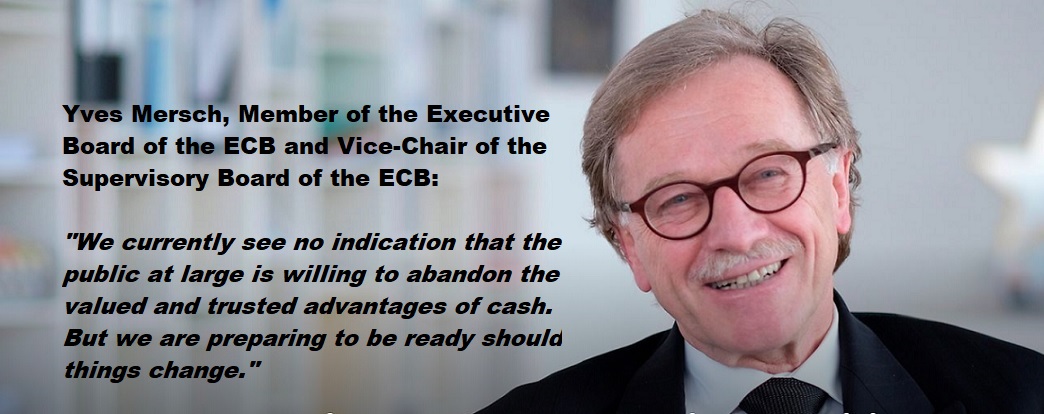
The European Central Bank is stepping up its analytical investigations into the potential for creating a central-bank backed digital currency for retail customers, a move which would be „a game changer” for the banking industry, says ECB exec Yves Mersch.
In a speech given at the Consensus 2020 virtual conference, Mersch says the ECB’s work on digital currencies is „not because we want to keep up with fashionable trends, but because we have to be ready”.
„Ready to embrace financial technological innovation which has the potential to transform payments and money faster, and in more disruptive ways, than ever before.”
The central bank currently has a task force working through the implications of CBDC.
„A wholesale CBDC, restricted to a limited group of financial counterparties, would be largely business as usual,” says Mersch. „However, a retail CBDC, accessible to all, would be a game changer. So a retail CBDC is now our main focus.”
The creation of a retail CBDC would need to address the currency’s legal tender status and the relationship between a CBDC and euro banknotes and coins, along with the process by which one could be exchanged for the other.
Mersch describes two different ways to design a CBDC – operating either as a decentralised digital token, or based on deposit accounts lodged with the central bank.
Of the former, he says: „We are currently looking into the legal questions raised by the potential use of intermediaries to facilitate the circulation of a CBDC and also the processing of transactions in a CBDC. To what extent are we permitted to outsource public law tasks to private entities? And what would be the appropriate extent of supervision over such entities?”
The latter approach raises serious policy questions relating to the potential disintermediation of commercial banks and the possibility of digital bank runs, as consumers cash out their accounts in favour of a central bank-issued currency.
What, then, could be done to mitigate the impact of a CBDC on the financial system? asks Mersch.
„One option could be to remunerate CBDC at below-market rates in order to create incentives for non-banks to rely more on market-based alternatives rather than on central bank deposits. The drawback would be that, in times of crisis, it may become necessary to apply highly negative rates, which could generate criticism from the public and substantially undermine public confidence in the central bank as well as in the basic values of saving which underlie our societies.
„Another option is a tiered remuneration system. In line with the functions of money, the first tier could serve as a means of payment. The central bank would have to refrain from setting a lower or a negative interest rate in order to keep a CBDC attractive to the public as a means of payment. While the second tier could serve as a store of value, the central banks could discourage people from using it as such by setting unattractive interest rates. However, such schemes should draw from the experience of multiple exchange rate regimes. And the repercussions of the intentional use of such schemes need to be subjected to an additional comprehensive investigation.”
For the moment, the ECB’s investigation is purely analytical, Mersch stresses, but adds: „If and when the time comes, we want to be ready – and we will be ready.”
Banking 4.0 – „how was the experience for you”
„To be honest I think that Sinaia, your conference, is much better then Davos.”
Many more interesting quotes in the video below: